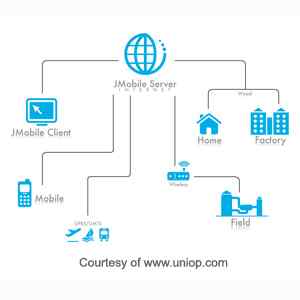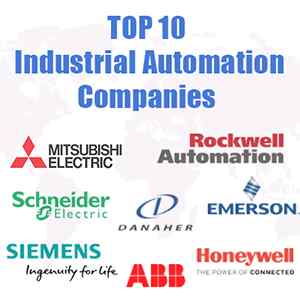The M2M Value Chain and Diverse IoT Applications

Introduction
In today's interconnected world, the Internet of Things (IoT) has emerged as a transformative force, connecting devices and enabling seamless communication between machines. At the heart of this interconnectedness lies the M2M (Machine-to-Machine) value chain, a complex ecosystem that facilitates the flow of data and information between connected devices. Understanding the M2M value chain is crucial to unlocking IoT's full potential and harnessing its myriad benefits.
The M2M value chain in IoT encompasses a diverse range of components, stakeholders, and processes, all working together to enable efficient communication and data exchange. From devices equipped with sensors and actuators to cloud platforms that provide storage and analytics capabilities, each element in the value chain plays a vital role in shaping the IoT landscape. By delving into the intricacies of the M2M value chain, organizations can streamline operations, drive automation, enhance decision-making, and create new opportunities for innovation across various industries. From smart cities and industrial automation to healthcare and energy management, IoT M2M value chain applications are vast and impactful.
In this comprehensive exploration, we will delve into the M2M value chain in IoT, examining its key components, benefits, and applications. We will uncover the significance of device management, connectivity, data transmission, cloud platforms, analytics, and security in enabling seamless communication between connected devices. Additionally, we will highlight the importance of standards and interoperability in ensuring compatibility and integration within the M2M ecosystem.
Furthermore, we will examine the multitude of benefits of leveraging the M2M value chain in IoT. From automation and efficiency to real-time monitoring and control, organizations can experience cost reduction, enhanced safety and security, and improved customer experiences through the implementation of M2M-enabled IoT solutions.
To fully grasp the potential of the M2M value chain, we will explore a range of applications across different sectors. From smart cities revolutionizing urban living to industrial automation transforming manufacturing processes, we will uncover how M2M communication drives innovation, efficiency, and sustainability. Additionally, we will explore applications in healthcare, agriculture, energy management, fleet management, and logistics. In these applications, the M2M value chain paves the way for improved outcomes and optimized resource utilization.
Join us on this journey as we unravel the M2M value chain. We will shed light on its transformative applications, and understand how this interconnected ecosystem shapes IoT's future.
| Also Read: The Role of Data Analytics in the M2M Value Chain |
The M2M value chain typically includes the following elements:
Devices and Sensors: These are physical objects or machines equipped with sensors, actuators, and communication modules to collect and transmit data. Examples include sensors in industrial machinery, smart home devices, or wearable health trackers.
Connectivity: This layer involves the network infrastructure and communication protocols that allow devices to connect and communicate with each other and with cloud platforms or other systems. It includes technologies such as cellular networks, Wi-Fi, Bluetooth, or Low Power Wide Area Networks (LPWANs) like LoRaWAN or NB-IoT.
Data Transmission: This component encompasses the mechanisms and protocols used to transmit data between devices and backend systems. It includes protocols like MQTT (Message Queuing Telemetry Transport), CoAP (Constrained Application Protocol), or HTTP (Hypertext Transfer Protocol).
|
Also Read : Comparing M2M Protocols: MQTT vs. CoAP in IoT Applications |
Cloud Platforms and Gateways: Cloud-based platforms and gateways act as intermediaries between devices and applications or services that consume data. They provide storage, processing, and analytics capabilities, allowing data aggregation, analysis, and visualization. Cloud platforms like AWS IoT, Microsoft Azure IoT, or Google Cloud IoT are commonly used.
Data Management and Analytics: This layer involves processing and analyzing collected data to extract meaningful insights. It may include real-time analytics, machine learning algorithms, or predictive analytics techniques to uncover patterns, anomalies, or trends.
Applications and Services: This component encompasses end-user applications or services that utilize M2M communication insights. These can range from consumer applications like smart home systems or vehicle tracking to industrial applications like predictive maintenance or supply chain optimization.
Security and Privacy: As data is transmitted and processed across multiple layers of the M2M value chain, security, and privacy considerations become crucial. This involves implementing robust security measures such as encryption, authentication, and access control to protect the data and ensure the integrity of the system.
Device Management: Device management plays a vital role in the M2M value chain. It involves tasks such as device provisioning, configuration, monitoring, and firmware updates. Device management platforms allow organizations to remotely manage and maintain large fleets of connected devices efficiently.
Standards and Interoperability: Standardization is crucial for interoperability and seamless communication within the M2M value chain. Industry consortia and organizations work on developing and promoting standards such as MQTT, CoAP, OMA-DM (Open Mobile Alliance - Device Management), and oneM2M to ensure compatibility and ease of integration across different devices, networks, and platforms.
Network Providers and Connectivity: Network providers, such as cellular network operators, offer connectivity services to facilitate M2M communication. They provide the infrastructure and coverage required for devices to transmit data over the network. Network providers may also offer specialized connectivity solutions like eSIMs (embedded SIMs) or dedicated IoT network services.
Edge Computing: Edge computing brings computation and data processing closer to devices or sensors, reducing latency and enabling real-time decision-making. In the M2M value chain, edge computing can help process data at the edge of the network. This reduces the need for extensive data transmission to cloud platforms. It enables faster response times and can be particularly useful in applications where real-time analysis is critical, such as industrial automation or autonomous vehicles.
Vertical Integration: The M2M value chain often involves various stakeholders vertically integrating their operations to deliver end-to-end solutions. For example, a company may manufacture devices, develop connectivity solutions, provide cloud platforms, and offer application services. Vertical integration streamlines the value chain, improves interoperability, and enhances the overall user experience.
Data Monetization: Data generated through M2M communication holds immense value. Organizations can leverage this data to gain insights, develop enhanced services, or monetize it through partnerships or data marketplaces. Data monetization models may involve selling aggregated and anonymized data to third parties, offering value-added services based on data insights, or utilizing it for targeted advertising.
Evolving Ecosystem: The M2M value chain in IoT is constantly evolving, driven by advancements in technology and emerging use cases. Various connectivity options, such as 5G networks or satellite-based communication, expand M2M communication possibilities. Edge computing capabilities continue to improve, enabling more sophisticated data processing at the network edge. Additionally, AI and machine learning further enhance intelligence and automation within the M2M ecosystem.
As the M2M value chain in IoT continues to mature, it will open up new opportunities for innovation, efficiency, and improved decision-making across various industries, including manufacturing, healthcare, transportation, and smart cities.
Benefits and applications of the M2M value chain in IoT:
Benefits:
1. Automation and Efficiency: M2M communication enables the automation of various processes, reducing manual intervention. This improves operational efficiency, minimizes human errors, and optimizes resource utilization.
2. Real-time Monitoring and Control: With M2M communication, devices can transmit data in real-time, allowing organizations to monitor and control their assets remotely. This is particularly beneficial in applications such as remote equipment monitoring, smart grid management, or predictive maintenance, where real-time insights enable proactive decision-making.
3. Cost Reduction: M2M communication helps organizations reduce costs through improved asset utilization, predictive maintenance, and optimized resource allocation. By monitoring and analyzing data from connected devices, organizations can identify cost savings, streamline operations, and reduce downtime.
4. Enhanced Safety and Security: M2M communication enables robust safety and security measures. For instance, in industrial environments, connected sensors can detect potential hazards or abnormal conditions, triggering immediate alerts or automated actions to prevent accidents. Additionally, M2M communication allows for secure data transmission, ensuring information privacy and integrity.
5. Improved Customer Experience: IoT applications powered by the M2M value chain can enhance customer experience. For example, smart home systems enable users to control and monitor their devices remotely. In addition, connected cars provide services like real-time navigation, vehicle diagnostics, and personalized entertainment options.
Applications:
1. Smart Cities: M2M communication enables smart city initiatives, such as intelligent transportation systems, smart parking, waste management, and energy-efficient infrastructure. By connecting various city components and collecting data, cities can optimize resource utilization, reduce traffic congestion, enhance public safety, and improve the overall quality of life for residents.
2. Industrial Automation: M2M communication plays a vital role in industrial automation and Industry 4.0 initiatives. Connected sensors, machines, and control systems enable real-time monitoring, predictive maintenance, and process optimization. This leads to increased productivity, reduced downtime, and improved operational efficiency in manufacturing, logistics, and supply chain management.
3. Healthcare: M2M communication enables remote patient monitoring, wearable health trackers, and telemedicine applications. Connected medical devices can transmit vital signs, medication adherence data, or emergency alerts. This allows healthcare providers to monitor patients remotely, provide timely interventions, and improve healthcare outcomes.
4. Agriculture: IoT applications in agriculture leverage M2M communication to enable precision farming, soil monitoring, irrigation control, and livestock management. Connected sensors and actuators optimize resource usage, automate tasks, and improve crop yields while minimizing environmental impact.
5. Energy Management: M2M communication enables smart grid systems, energy monitoring, and demand response solutions. By collecting real-time energy consumption data and analyzing it, utilities can optimize energy distribution, implement demand-side management programs, and encourage energy conservation.
6. Fleet Management and Logistics: M2M communication is widely used in fleet management and logistics applications. It allows organizations to track vehicles, monitor fuel consumption, optimize routes, and improve delivery efficiency. Real-time data from connected devices enable better logistics planning, reduced fuel costs, and enhanced customer service.
Conclusion
The M2M value chain in IoT is a dynamic and interconnected ecosystem that empowers organizations to leverage connectivity and data exchange between machines. By understanding and optimizing each component of the value chain, businesses can unlock a multitude of benefits and drive innovation across diverse industries.
Through device management, connectivity solutions, data transmission protocols, cloud platforms, analytics, and robust security measures, the M2M value chain enables automation, real-time monitoring, cost reduction, enhanced safety, and improved customer experiences. Organizations can streamline operations, make data-driven decisions, and optimize resource utilization, leading to increased efficiency, productivity, and competitiveness.
The M2M value chain in IoT spans various sectors, ranging from smart cities and industrial automation to healthcare, agriculture, energy management, and logistics. These applications revolutionize processes, enable predictive maintenance, enhance patient care, optimize agricultural practices, and transform energy consumption patterns. The M2M value chain is a catalyst for sustainable development, creating more connected and intelligent systems that drive positive impacts on society and the environment.
As the M2M value chain continues to evolve, the integration of emerging technologies like edge computing, artificial intelligence, and 5G networks will further amplify its capabilities. This will open up new possibilities. Collaboration and standardization efforts will ensure interoperability and seamless integration across devices, networks, and platforms, fostering a thriving ecosystem of connected devices and services.
In conclusion, the M2M value chain in IoT represents the foundation of a connected world. By harnessing its power, organizations can drive operational excellence, unlock valuable insights, and create innovative solutions. This will improve lives, enhance efficiency, and shape a smarter future. The journey of IoT and the M2M value chain is ongoing. As technology advances, the potential for transformative applications and benefits will continue to expand. Embracing this interconnected ecosystem is key to staying at the forefront of the digital revolution and leveraging its immense potential.







